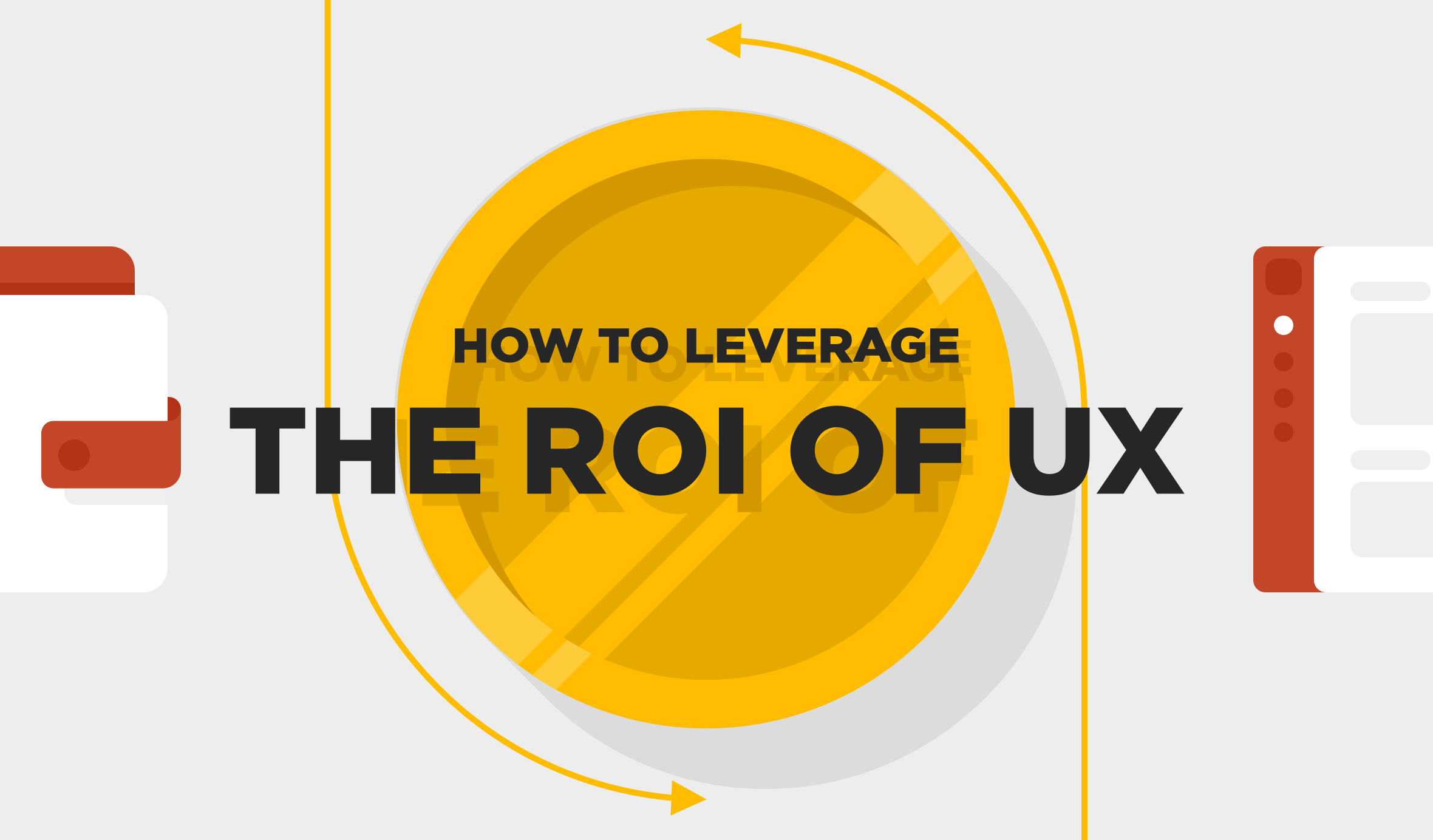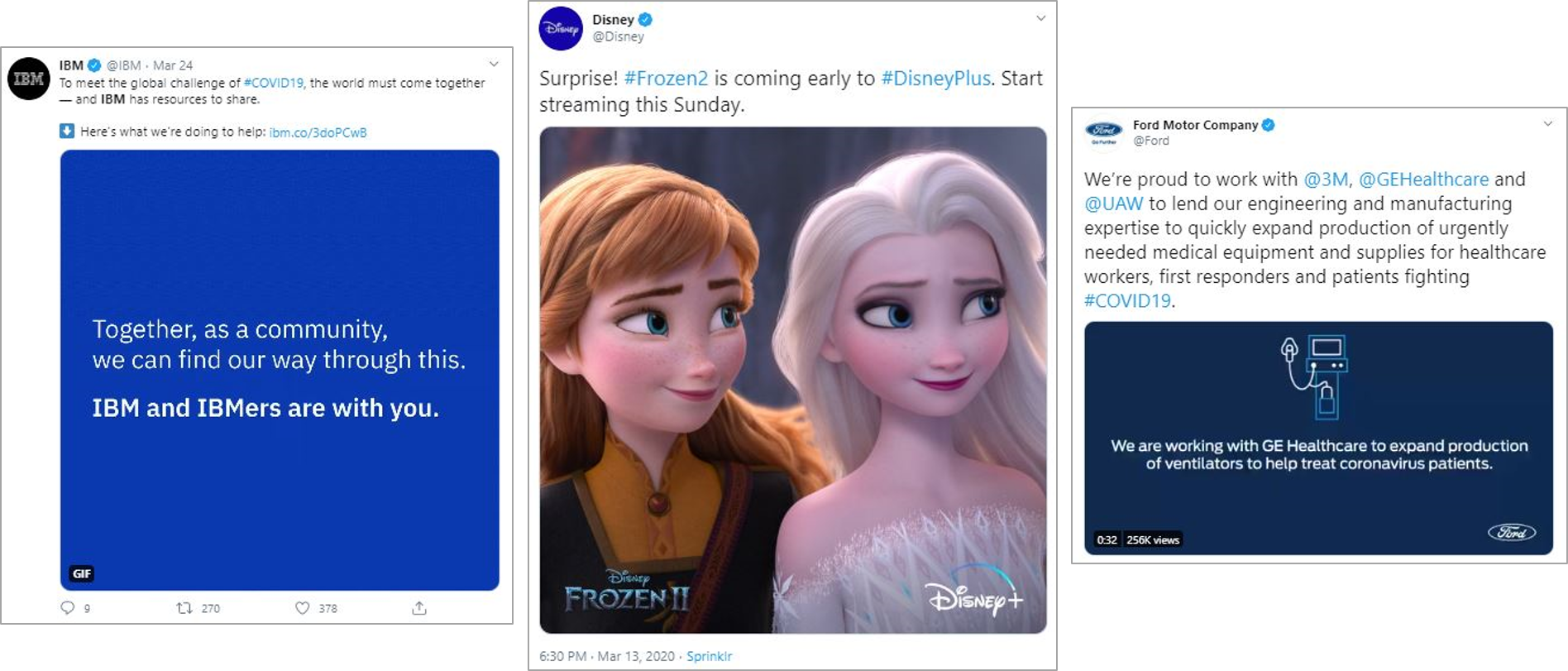How to Leverage the ROI of UX in Uncertain Times

The fallout from the coronavirus is stressing teams in unpredictable ways. Some UX groups we work with are slowing their work, while others are being forced into hyperdrive as products, services, websites, software, and portals are stressed with new use cases and traffic they weren’t originally designed for.
As a UX leader, necessity is the mother of invention. As needs change hour by hour, how do you adjust on the fly and lobby for additional resources? As a business leader, how do you identify, advocate for, and leverage the ROI of UX in uncertain times?
Infuse UX and design thinking into your go-forward strategy
Many of our clients are re-assessing their strategy right now, and it’s the perfect time to embrace design thinking and clear, human-centric UX as core to that process. The term “design” is frequently attached to how products look. However, the most mature organizations recognize that design is a key component of the entire corporate strategy around creating value through effective human experience. It’s well publicized that organizations that place design thinking at their core increase their value 200% better than the S&P 500. The reason?
Design thinking puts human-centric decision making in the forefront, highlighting ways that organizations can form meaningful connections with their employees and customers.
The design thinking process is about empathy for customers and employees, it’s about continuous deployment of better solutions, moment by moment, rather than attempts to hit “homeruns” with new products or technology.
In a time of crisis, the people that drive your business and receive value from it, hold the answer to where to allocate resources and energy.
The meaningful connection a business strives for is different for every organization. While Ford and IBM have recognized their human-centric strategy is about manufacturing and technical assistance with the crisis, Disney’s role is to maintain “business as usual” for families that need an escape from the daily stress of the pandemic. Disney quietly launched Frozen 2 on their streaming service months early. No doubt, the move was strategic (because more streamers would be online), but they removed most of the traditional fanfare of one of their releases.

In all cases, product experience is peeled back to its most essential elements, with messaging and execution simplified for audiences. Your short-term UX ROI is easy to tie back to the cost savings, speed of execution that design thinking drives through its simplification and focus on human needs.
Look for internal UX improvements to improve efficiency
Economic challenges heighten the necessity to retain customers, but businesses are sometimes forced to do that with their own decreased staff. The answer? Find ways to make your internal team more efficient. Remember, internal experiences have external impact.
Companies that invest in reducing friction in the UX of internal systems often see impressive ROI results, including:
- Higher productivity and time savings (a necessity when teams shrink)
- Higher employee satisfaction (important when morale sinks)
- Higher external KPIs (NPS, customer satisfaction ratings reduce churn in challenging times)
We typically recommend starting with a few near-term, incremental fixes first. This helps add value quickly and gain buy-in from other stakeholders before tackling bigger fixes that will produce even more ROI, but also will take more time and budget to complete. For example, moving or renaming a button in call center software or reorganizing the tabs in a CRM can shave seconds to minutes off every call or sales workflow, leading to huge ROI quickly.
Those small changes to internal tools can grow to have huge external impact. Imagine if the primary tool you used to do your job were 150% faster to work through… the efficiency created internally may drive tens of millions of dollars in cost savings, as well as create tremendous upside sales. We can point to multiple cases with our clients where internal tools or helpful customer service interfaces produced significant efficiency improvements.
We helped Tuft & Needle significantly reduce their inbound support calls and saved First Solar millions in productivity by producing an energy prediction software for their team.
Efficiency gains also come from the avoidance of rework later. Robert Pressman identified in his book about software development that more than 80% of software costs are incurred after the development phase. Prototyping de-risks innovation projects, and every $1 invested in design saves nearly $10 in rework later.
When your organization is strapped for resources, internal efficiency could save the day.
The show must go on
Regardless of whether it’s a ramp up, or a slowdown, UX work must continue for design and development teams. A Forrester report found that for every $1 invested in UX, the average company received $100 in return, so UX and customer experience are NOT the places to cut in crisis.
A secret to success in human-centered design is continuous delivery of ever more efficient and nuanced solutions. Products have ship dates, interfaces and apps need refinement, adaptation to new needs for new challenges, maintenance, and conversion rates can always be optimized. Instead of focusing solely on propping up your in-house team or only enlisting outside help, the best ROI often comes from a mix of both.
A combo inside/outside team drives the most efficient, innovative and impactful results due to:
-
Combined Expertise: The right UX agency complements your internal team and delivers “the power of many.” By working side by side, each team soaks up the other’s expertise and skills, allowing both sides to grow and apply their collective knowledge.
-
Greater Speed and Efficiency: When you have too much work and not enough resources, it usually takes months to hire and fully onboard a new employee. With the right UX agency partner, you can start feeling the results of their contributions within days. That means more work gets done faster so you can meet your goals.
-
Complementary Skill Sets and Personalities: Every designer has their own skill set and personality. One may be really good at the details of complex component and system design, while another may be more adept at innovation, synthesizing big ideas and applying big-picture thinking. Hiring a UX team that complements your design and UX talent can have significant benefits.
While either in-house team development or agency partnership may work fine independently, in-house / agency collaboration usually leads to the best outcomes, especially because you can adjust the levers as your company and product evolve.
Moving forward in 2020
The current crisis and economic climate has fundamentally altered course for many businesses large and small. In some cases, it has slowed the production or execution of user experience solutions currently in flight. In other cases, it has thrown designers, engineers and product managers into a frenzy, trying to keep up with new demands of solving ever-changing problem sets.
In this new environment of rapid change, having the right design and UX thinking at the table will enable your business to stay human-centered, creating solutions and outcomes that serve people in a time of need. This focus on people will build future brand and product loyalty as things improve. Customers and employees will remember the meaningful connections you make with them right now, making your investment in UX pay dividends long-term.
In short: invest in the right things today—connection, UX, and solid design thinking—and you’ll set yourself up for greater success in the future. Breathe, assess, and make smart decisions based on meaningful connections, and you’ll come out ahead.